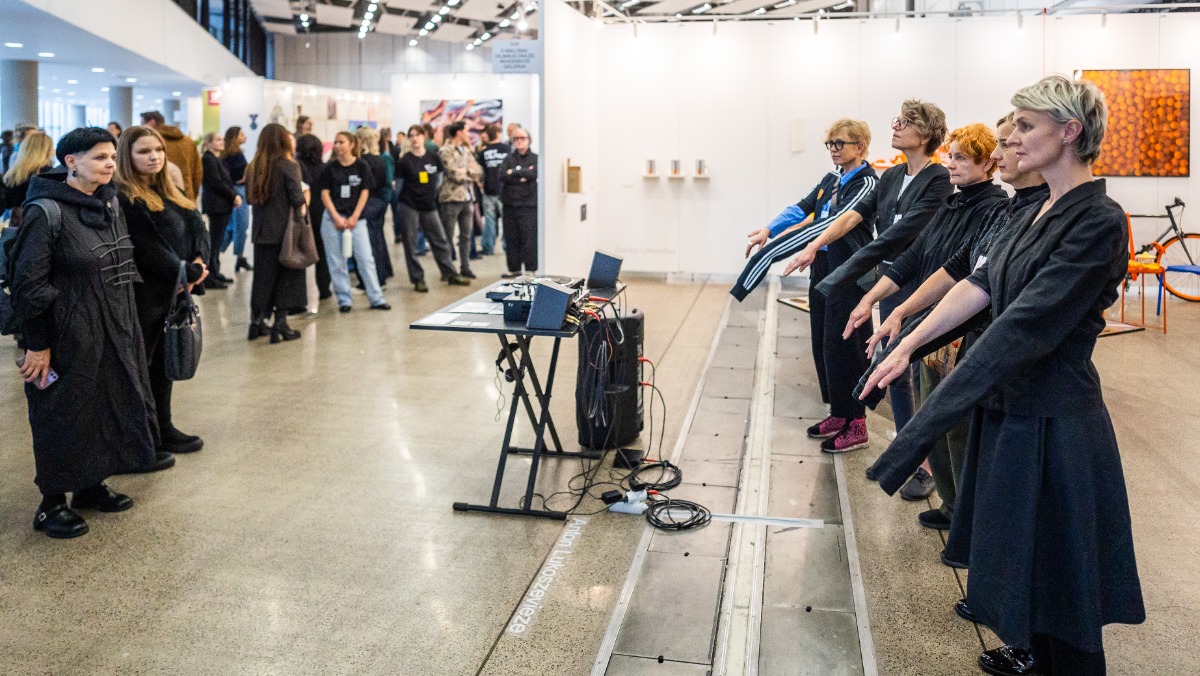
ArtVilnius'25: Protests and Hopes
On Thursday, October 2, Lithuanian artist and curator Laima Kreivytė sat in a blue dress next to her installation “Oranges Are Not The Only” at the ArtVilnius fair, squeezing juice from several oranges, and explained to me and few other visitors: “We are protesting against the party that now runs the Ministry of Culture. They are anti-Semites, pro-Kremlin, nationalists – everything is wrong with them. So the entire cultural sector is protesting. And on Sunday at 2 o’clock, here and across Lithuania – in small towns and many cultural institutions – there will be a protest. Here at ArtVilnius, people will also freeze for 30 seconds. Afterwards, Čiurlionis will be played, and a manifesto will be read.” These events and protests have shaken Lithuania’s entire cultural sector. Across the country, preparations were underway for the action “Sustingusi kultūra” (Frozen Culture).“The cultural field is very united. We don’t want to follow the path of what happened in Poland, or what’s happening now in Slovakia –not to mention Hungary or Russia.”
Laima Kreivytė at the booth of the Vilnius Academy of Arts gallery 5 Malūnai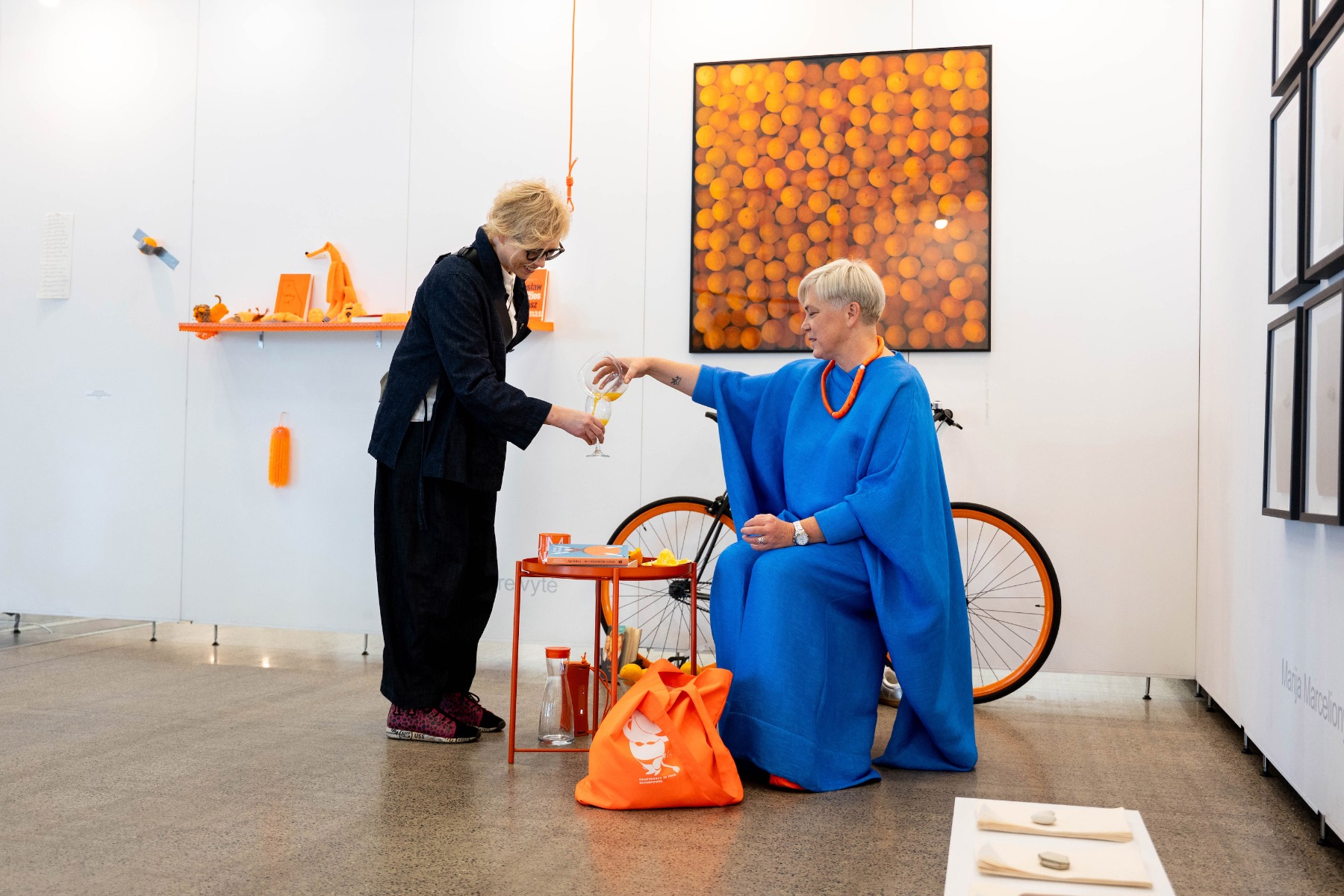
The very next day, October 3, Lithuania’s Minister of Culture, Ignatas Adomavičius, a representative of the Lithuanian Farmers and Greens Union, resigned. However, the ministerial post remained in the hands of the same party, so public protests continued. On Sunday at 2 p.m., the final day of the ArtVilnius fair, the normally noisy and bustling LITEXPO halls fell silent. People froze in place, standing like hundreds of living, immobile sculptures, in a gesture of solidarity with the country’s cultural institutions. It was a striking act of unity, one of the most powerful cultural demonstrations Lithuania has seen – perhaps the strongest since the fight for independence.
Elena Balsiukaitė-Brazdžiūnienė. Déjà vécu. 2023. Painting. Canvas, oil, acrylic. Presented by Meno Parkas gallery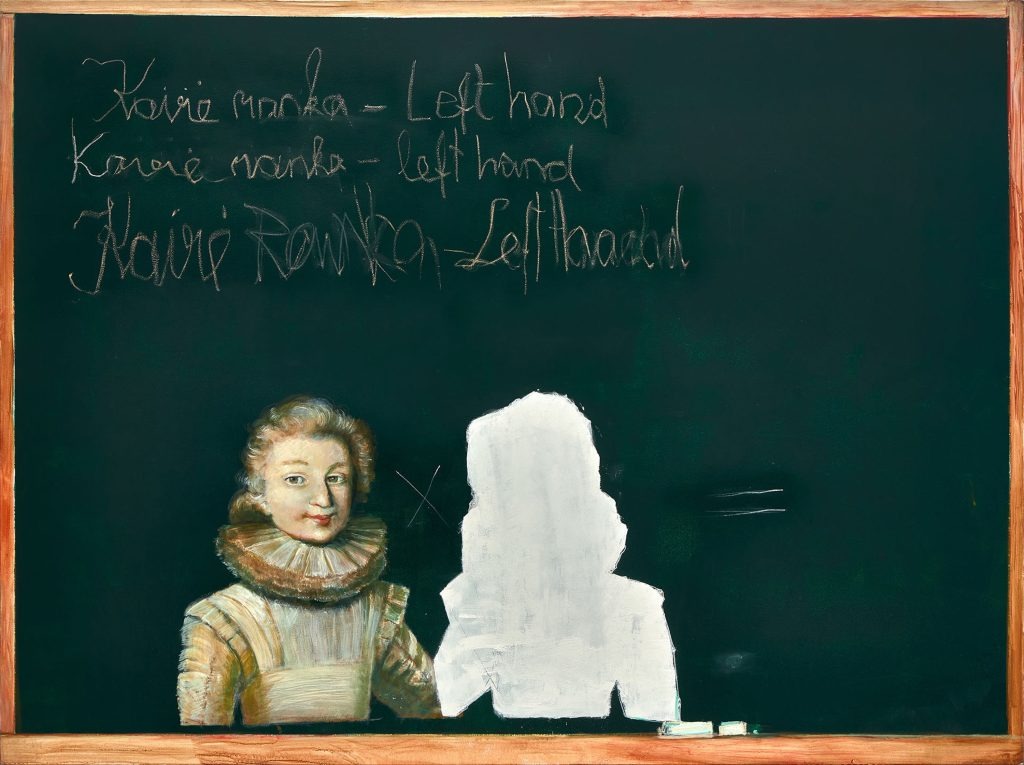
Apart from this unusual event – uncommon for any art fair – what else made this edition of ArtVilnius memorable? First, it seems that this year’s selection process for participants was somewhat stricter, which only enhanced the overall impression of the fair. At the same time, ArtVilnius continues to offer a wide variety of art for very different tastes and budgets. For example, the Young Collectors stand attracted considerable public. Here, works selected by various galleries were offered at prices up to €700, making contemporary art more accessible to emerging collectors. Second, a particularly successful idea was to showcase in Hall 4, the traditional Project Zone, exhibitions of several private collections from all three Baltic countries. The selections of collectors and the works from their collections were prepared by an international team: Maria Arusoo, director and curator of the Estonian Contemporary Art Centre; Latvian curator Inga Lāce, now chief curator of the Almaty Art Museum in Kazakhstan; and Sonata Baliuckaitė-Arlauskienė, the long-standing artistic director and curator of ArtVilnius. This part of ArtVilnius clearly demonstrated that an art collection can serve as a kind of portrait of its collector – a reflection of their personality, passions, priorities, and way of thinking.
Here, one could ask: what does collecting actually provide – the feeling of ownership or a sense of belonging? One might argue that the true value lies not in possession itself, but in the possibility of placing a work within the context of one’s own life. Ownership becomes a form of closeness – not utilitarian, but contemplative. A painting, sculpture, or photograph does not “belong” in the usual sense of the word – they exist autonomously, as living voices of culture. Yet in a private collection, they find continuation and enter into an intimate dialogue with the collector’s personal story. At the same time, in this way, collectors, while engaging in what may seem like entirely personal projects, help shape shared cultural narratives, preserve memory, and sustain artistic ecosystems.
Works from the Jānis Zuzāns Collection in the Project Zone at ArtVilnius 2025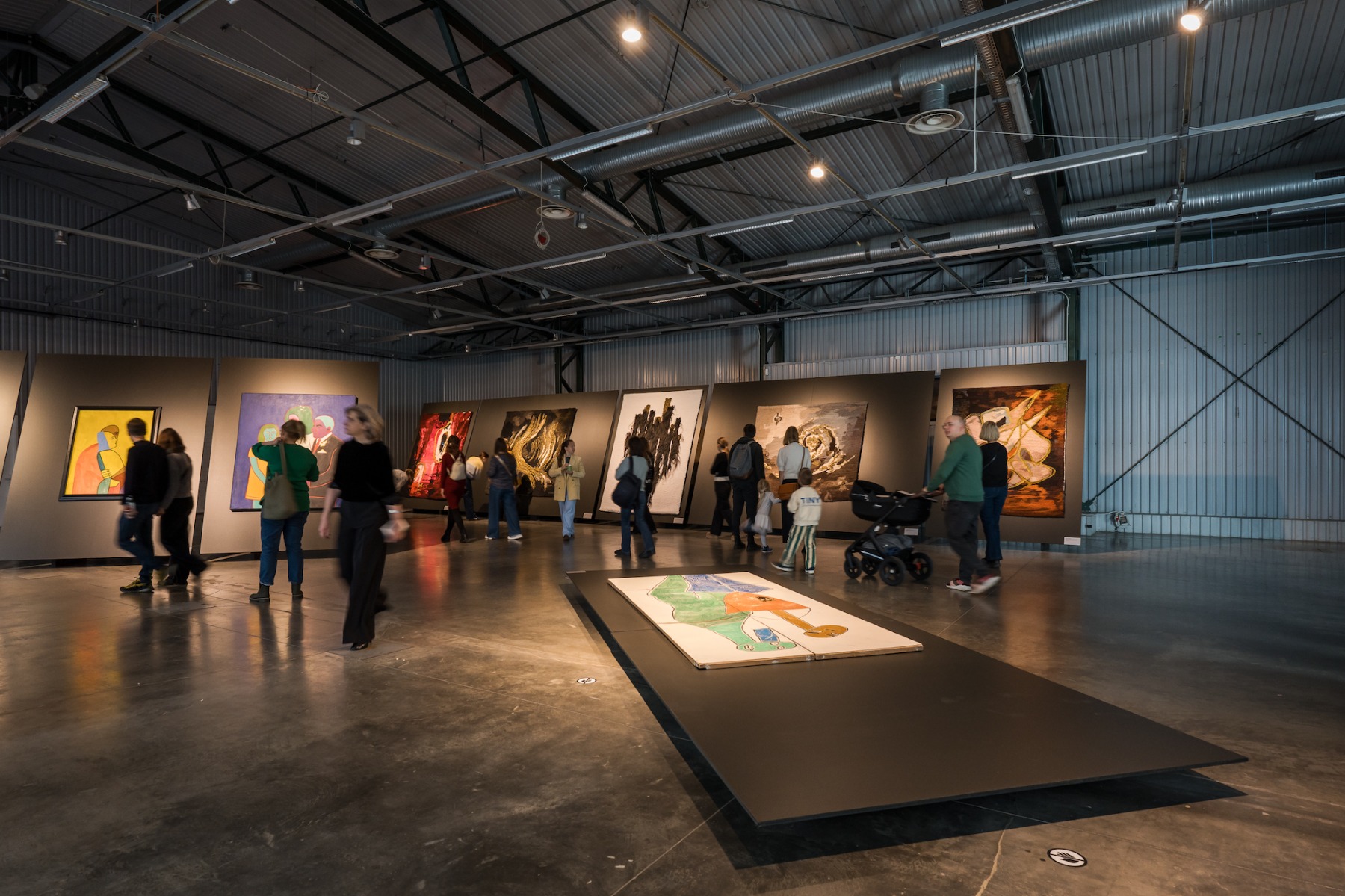
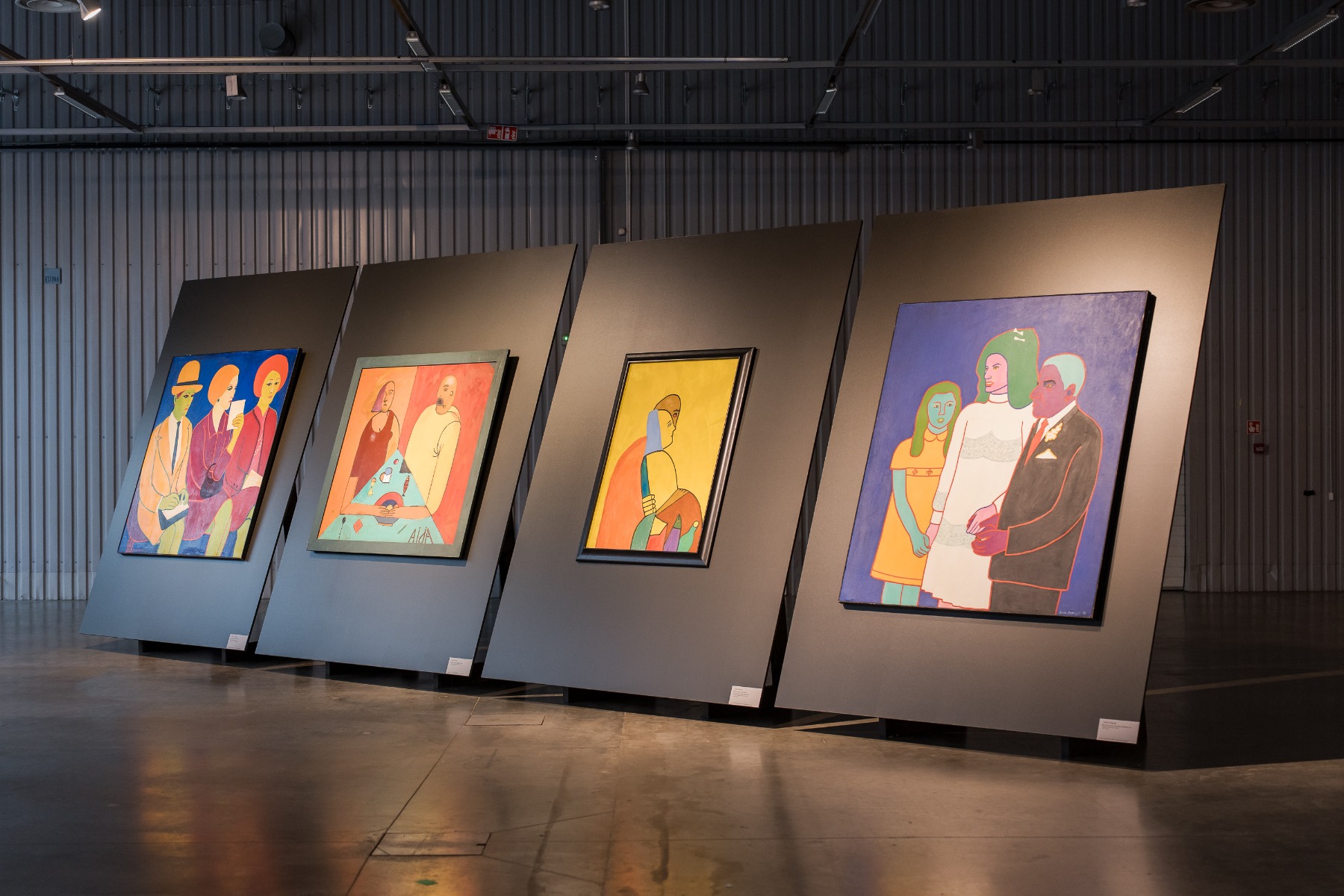
Of course, the curator’s choices also played a significant role in determining which works were exhibited at ArtVilnius. For instance, Inga Lāce selected from the extensive collection of Jānis Zuzāns works specifically by women artists – Zenta Logina & Elīza Atāre, Aija Zariņa, and Daina Dagnija. The selection of works from the VV Foundation was especially impressive, featuring different media, young artists, and experimental approaches – an effort to capture the pulse of our time.
Jonathan Monk. Steel hanger, 2006. From Boris Symulevich collection
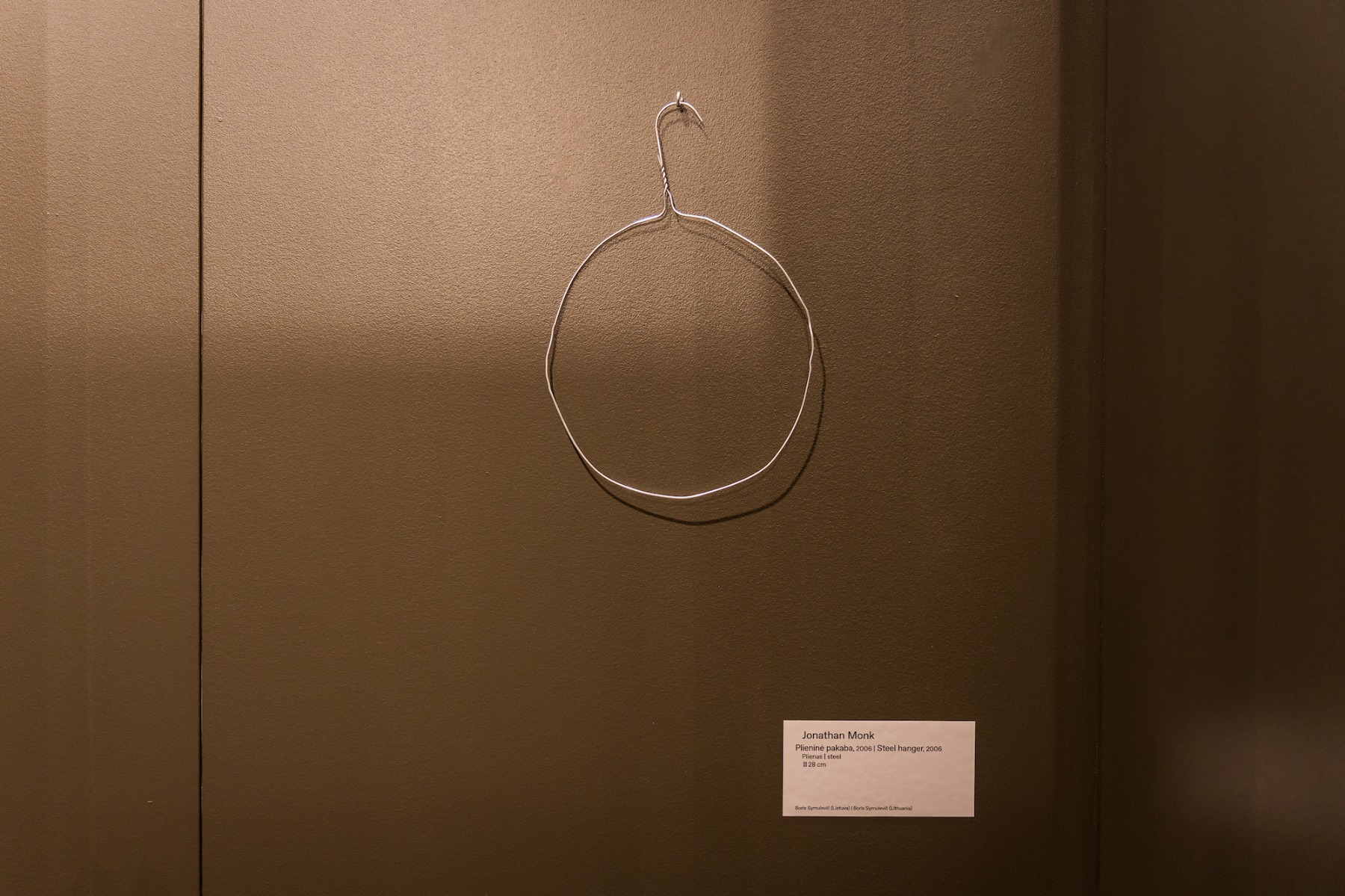
The fair also showcased the collections of Martin and Epp Kruus, founders of the Estonian Collection Kruus; Lithuanian collector Boris Symulevich, who prefers to stay out of the public eye but is deeply committed to supporting contemporary art in Lithuania and is also the founder of the art portals ArtNews.lt and Echogonewrong.com; and ArtVilnius’ long-time supporter COBALT, one of the Baltic States’ leading legal service providers, which presented works from the private collections of its partners across all three Baltic countries.
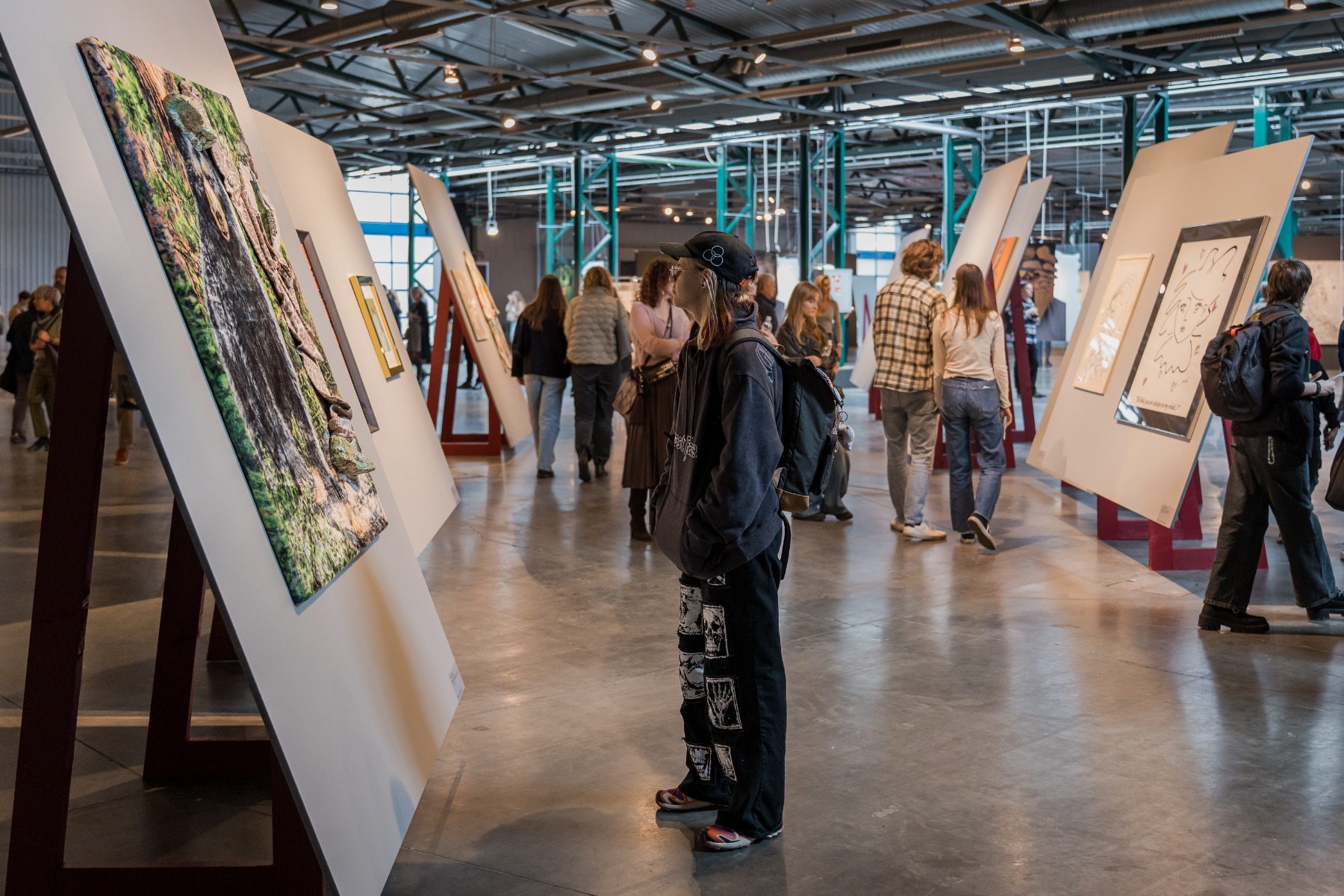
Olga Temnikova participated in ArtVilnius 2025 in two roles – both as a gallerist and as a collector. The collection of Olga and Indrek Kasela also went through a curatorial selection by Maria Arusoo before being presented in the Project Zone. “It really looked playful, kind of sexy, very international, and the selection of artists was really hot. I mean, I have a variety of artists in my collection, but she really made it look so hot,” she told me. In our conversation, she also praised the excellent organization of the fair and its engaging public program, which this year was also dedicated to the theme of collecting.
Paco Barragán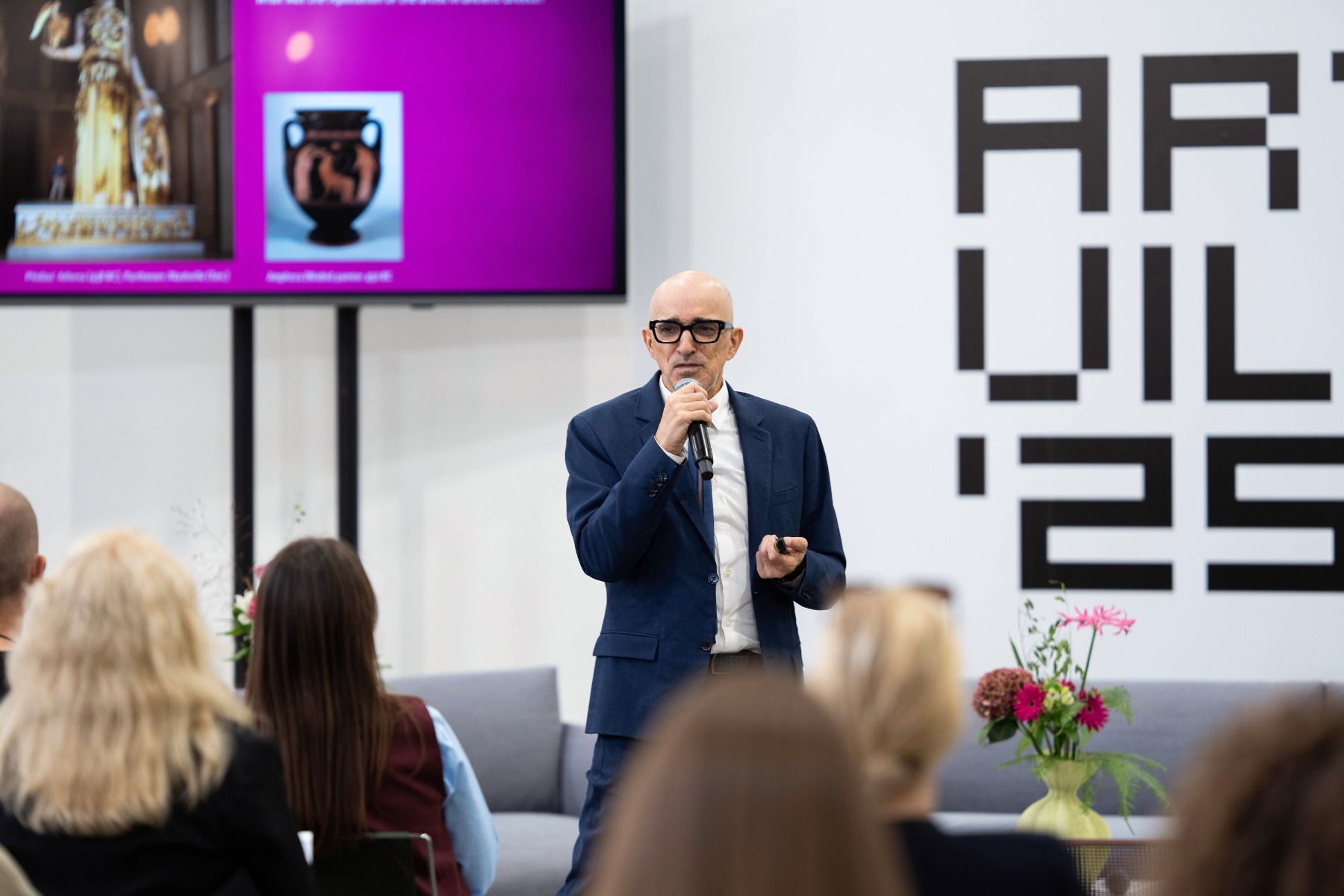
One of the highlights of the program was a talk by writer, curator, and art historian Paco Barragán titled “From Plunderers to Cosmopolitans – A Long Short History of Collecting (685 BCE – 2025 CE).” In his presentation, he traced the evolution of collecting from Antiquity to the present through six archetypes of collectors: “the plunderer – Ashurbanipal, the philanthropist – Aspasia of Miletus, the Maecenas – Caius Cilnius Maecenas, the encyclopedist – Isabella d’Este, the aficionado – Luis Alberto Ferré, and the cosmopolite – Patrizia Sandretto Re Rebaudengo.” Each type was embodied by a specific historical figure, their distinct approach to collecting, architectural space, and underlying ideology – together illustrating the dominant modes and motivations of collecting throughout history: from plunder and philanthropy to status, curiosity, education, and cosmopolitanism.
Kogo gallery (Tartu) presented works of Sabīne Vernere, Eike Eplik and Kristi Kongi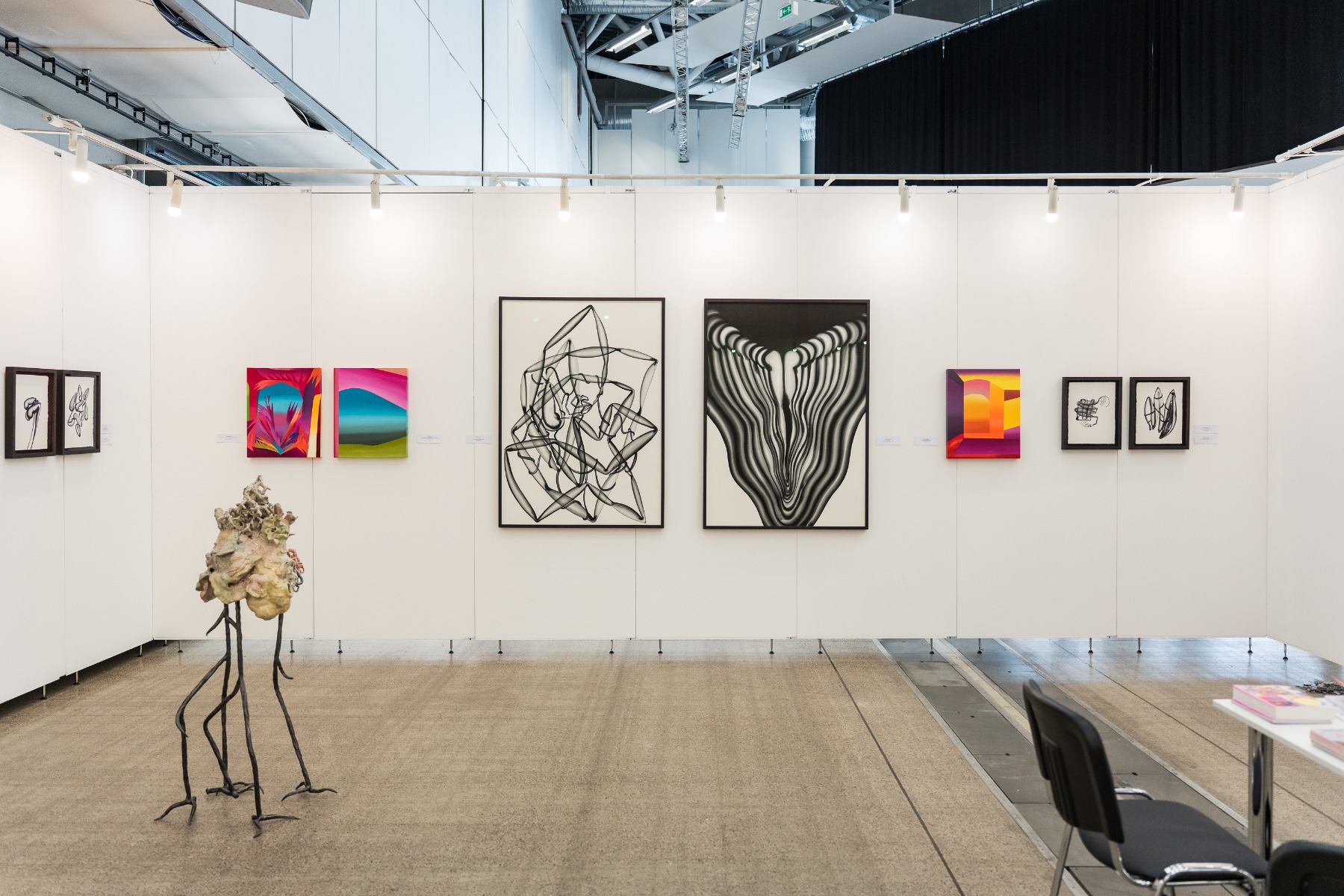
As always, ArtVilnius also hosted an award ceremony honoring the best participating artists and galleries, selected by an international jury. The Best Young Artist award went to Latvian artist Sabīne Vernere, recognized for her “strong and consistent artistic style.” Presented by Kogo Gallery from Tartu, her display was indeed impressive and powerful. In recent years, Vernere’s career has been experiencing a true breakthrough, and this award serves as yet another confirmation that her artistic style has reached its full depth and expressiveness.
Works by Matas Dūda were presented by the Akademija gallery of the Vilnius Academy of Arts.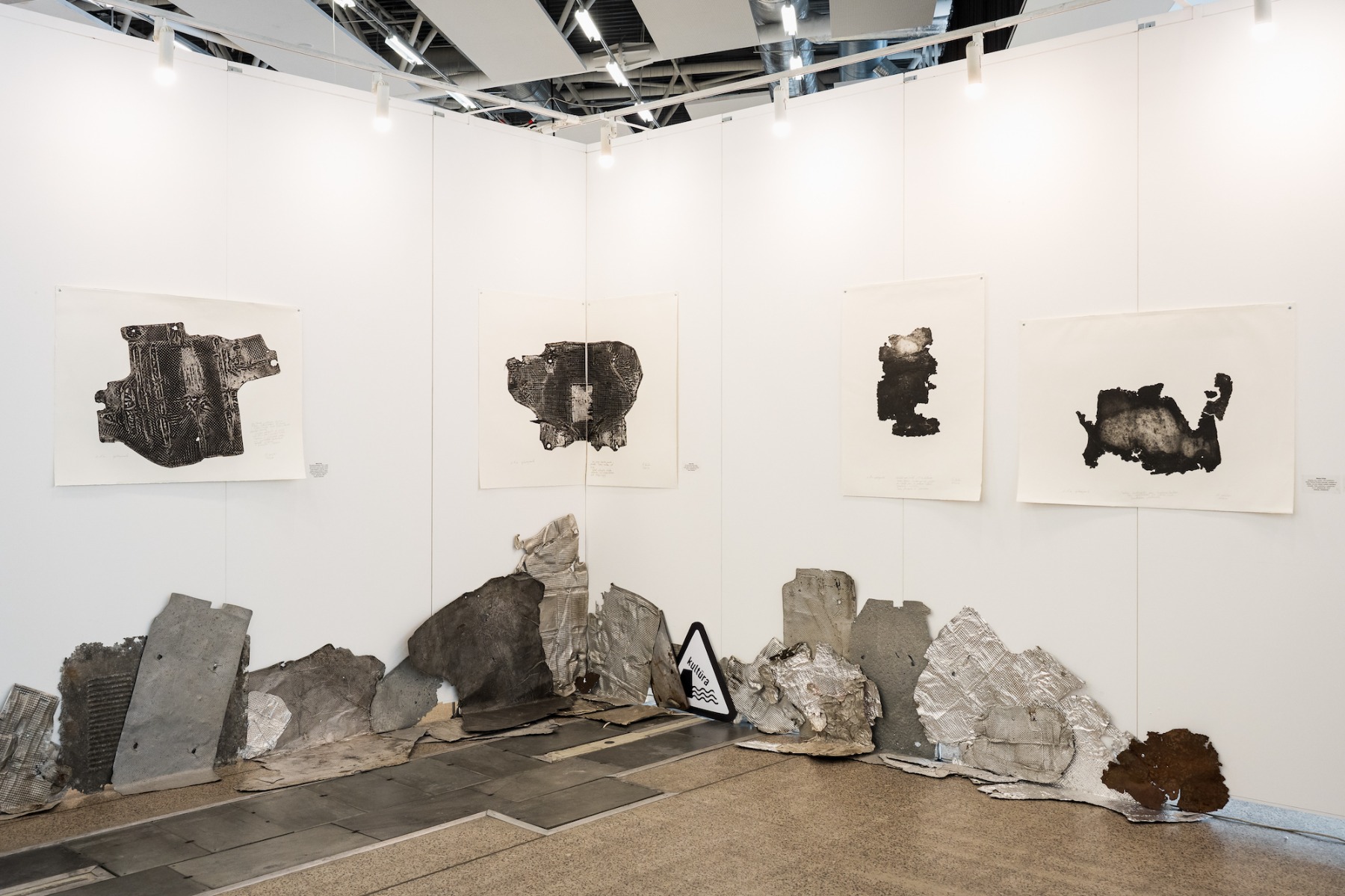
The jury awarded Matas Dūda the title of Best Artist at ArtVilnius ’25 for his topical and conceptual artistic and technical solution, presented by the Vilnius Academy of Arts gallery Akademija. (Incidentally, the Vilnius Academy of Arts was represented extensively, with six galleries participating.) The active involvement of art academies adds an extra dimension to the fair, bringing student projects and experimental works into the conversation and showcasing the next generation of Baltic talent. The Pilot Gallery, representing the Latvian Academy of Arts, also participated, presenting three young artists: Elza Albiņa, Gunta Lante and Modris Svilāns. Latvia was further represented by Bastejs Gallery, Agijas Sūnas Art Gallery, and Bazar’t Gallery. Māksla XO made it into the fair’s TOP-7 galleries, alongside outstanding presentations from Drifts Gallery (Vilnius), Meno Niša Gallery (Vilnius), and Temnikova & Kasela Gallery (Tallinn).
Olga Temnikova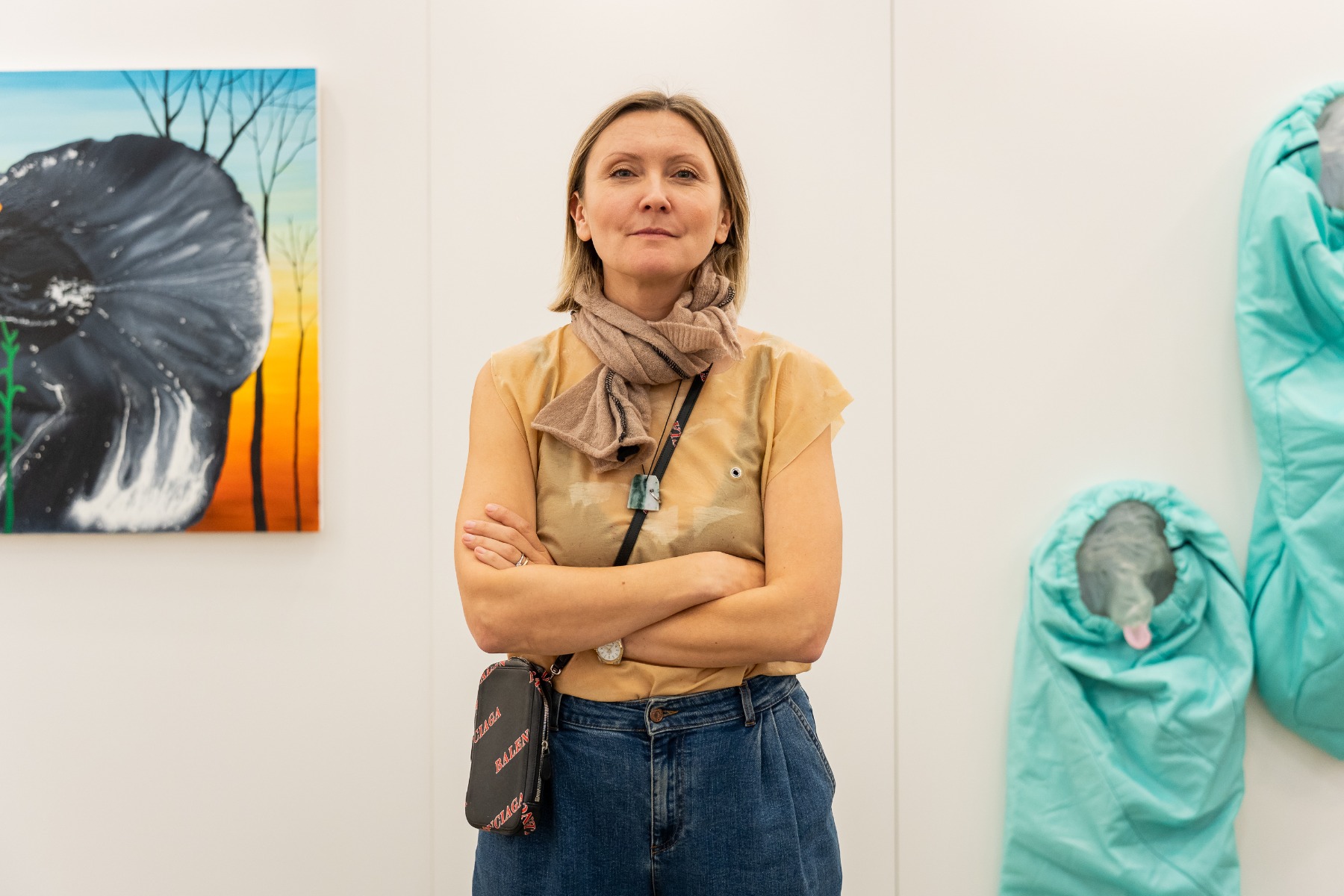
Temnikova & Kasela gallery presented works of Kaido Ole, Jaan Toomik, Edith Karlson and Merike Estna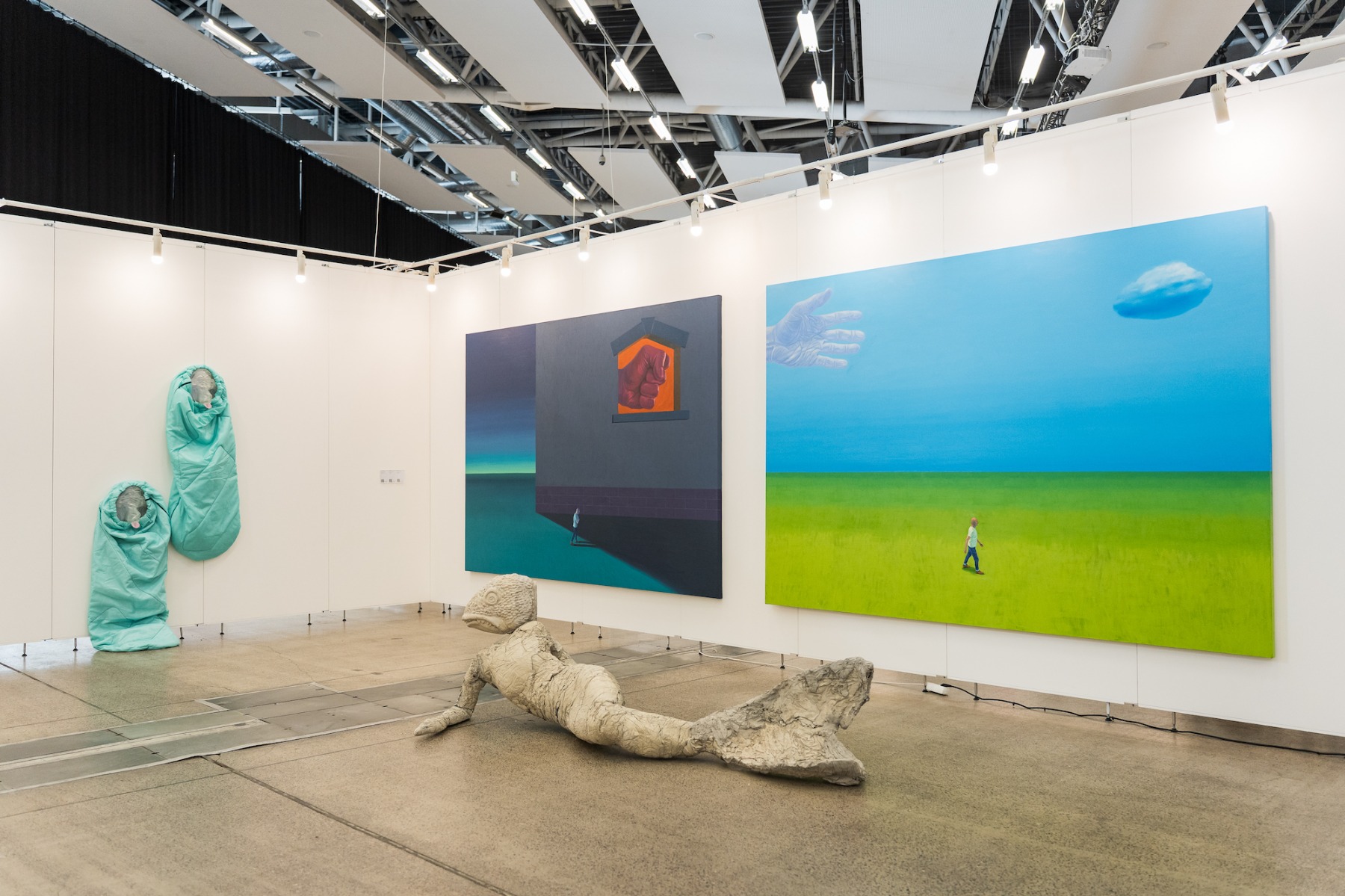
Overall, the Baltic focus – especially emphasized in this year’s edition of ArtVilnius – proved to be a well-justified and meaningful concept. “Local is the new global,” Olga Temnikova told me with a smile. Speaking about the “parade of collections,” she noted: “It was a little bit similar to the Zuzeum show I did a few years ago. There were a lot of overlapping names. But I’m happy that there’s a next step, because this is what we were trying to achieve at Zuzeum. We just wanted people to get to know each other, hang out, and inspire one another. And this is what’s happening now.”
Roman Korovin, House and Tree. Painting. Oil on canvas. 2020. Presented by Māksla XO gallery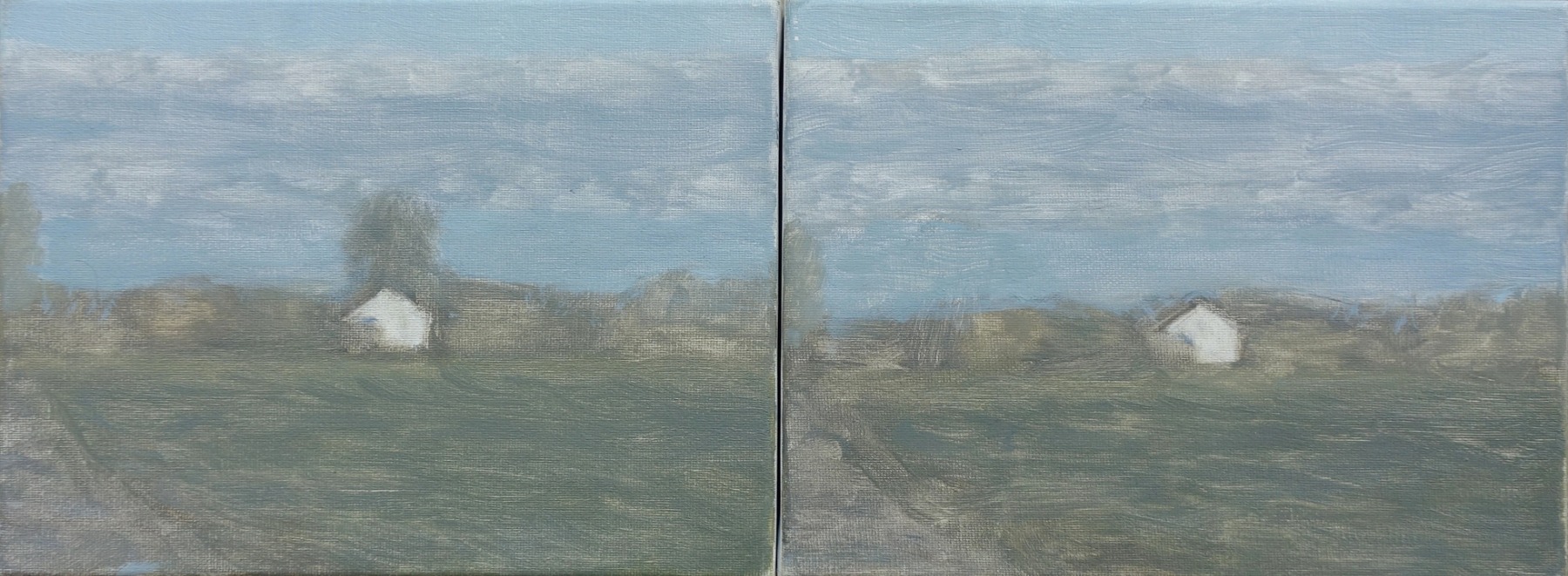
And I was also very curious to see how a conversation over a glass of champagne could spark a process that ended with two paired works by Latvian artist Romans Korovins, this year’s Purvitis Prize winner, being acquired for the collection of Brazilian entrepreneur Sergio Linhares in Munich. Until now, he had never collected works by artists from the Baltic countries. Events like ArtVilnius, which can attract the attention of collectors beyond the region, clearly provide an excellent impetus for such developments.
The only puzzle for me is why Polish galleries and collectors have not yet become regular participants or visitors at ArtVilnius, given that Poland is a close neighbor of Lithuania, just like Estonia and Latvia. By the way, this year the “Polish contingent” at the Riga Contemporary Art Fair was very impressive, featuring high-level galleries and outstanding artists. Cultural collaboration between Poland and the Baltic countries seems like a natural step, but progress in this direction has been uneven, with waves of activity followed by pauses. Perhaps this should be seen as a potential for growth.
Upper image: Paulina Pukyte. Performance "Second Correction". P.P.: “It’s a set of clothes with one sleeve cut off and sewn onto the other. For the protest, I organized my fellow artists to freeze for ten minutes, standing with their hands held forward, wearing these distorted garments.”